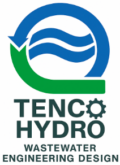Efficient waste management is crucial for any industrial operation, particularly in sectors involving large volumes of water, such as wastewater treatment plants, food processing facilities, and oil refineries. One of the critical components of an effective waste management system is the scum concentrator, which separates and removes scum—a layer of floating solids—from wastewater. However, to maximize the efficiency and performance of a scum concentrator, integrating a heated and mixed scum holding tank can be a game-changer. Here’s why:
1. Enhanced Separation Efficiency
A heated and mixed scum holding tank significantly improves the separation efficiency of the scum concentrator system. Here’s how:
- Temperature Control: Heating the scum holding tank ensures that the scum remains in a more fluid state, reducing its viscosity. This makes it easier to pump and process, leading to more efficient separation.
- Mixing Action: Continuous mixing prevents the scum from settling or forming solid clumps. This ensures a consistent feed to the scum concentrator, enhancing its performance and preventing blockages or disruptions.
2. Improved Processing Speed
By maintaining the scum in a fluid and homogeneous state, a heated and mixed holding tank allows for faster processing times:
- Consistent Flow: The homogeneity achieved through mixing results in a steady and predictable flow to the scum concentrator, optimizing the system’s throughput.
- Reduced Downtime: The reduced likelihood of blockages and the consistent temperature help maintain a smooth operation, minimizing downtime and maintenance needs.
3. Higher Scum Concentration
Heating and mixing the scum holding tank can lead to higher scum concentration, which offers several advantages:
- Better Separation: Higher concentration means that the scum concentrator can more effectively separate and remove solids from the water, leading to cleaner effluent.
- Volume Reduction: More concentrated scum means less volume to handle, reducing the load on downstream processing and disposal systems.
4. Energy Efficiency
While it might seem counterintuitive, using a heated and mixed scum holding tank can actually enhance the overall energy efficiency of your waste management system:
- Optimized Heat Utilization: Heating the scum in a controlled environment allows for more efficient use of energy compared to processing cold, viscous scum.
- Reduced Pumping Energy: Lower viscosity scum requires less energy to pump, further reducing the overall energy consumption of the system.
5. Operational Flexibility
A heated and mixed scum holding tank provides greater operational flexibility and adaptability:
- Variable Conditions: The ability to control temperature and mixing intensity allows the system to adapt to varying scum characteristics and operational conditions.
- Scalability: Whether you’re handling increased loads or dealing with different types of scum, the system can be adjusted to maintain optimal performance.
6. Extended Equipment Lifespan
Consistent and controlled processing conditions can extend the lifespan of your scum concentrator and related equipment:
- Reduced Wear and Tear: Preventing the formation of solid clumps and maintaining a steady flow reduces mechanical stress on pumps and concentrators.
- Lower Maintenance Costs: Fewer blockages and smoother operation translate to lower maintenance needs and costs over time.
Conclusion
Integrating a heated and mixed scum holding tank with your scum concentrator system offers a multitude of benefits, from enhanced separation efficiency and improved processing speed to higher scum concentration and operational flexibility. By investing in this combination, you can achieve a more efficient, cost-effective, and reliable waste management process. Whether you’re looking to optimize an existing system or planning a new installation, the advantages of a heated and mixed scum holding tank make it a worthwhile consideration.
Embrace this technology to ensure cleaner effluent, reduced operational costs, and a more sustainable approach to waste management.
